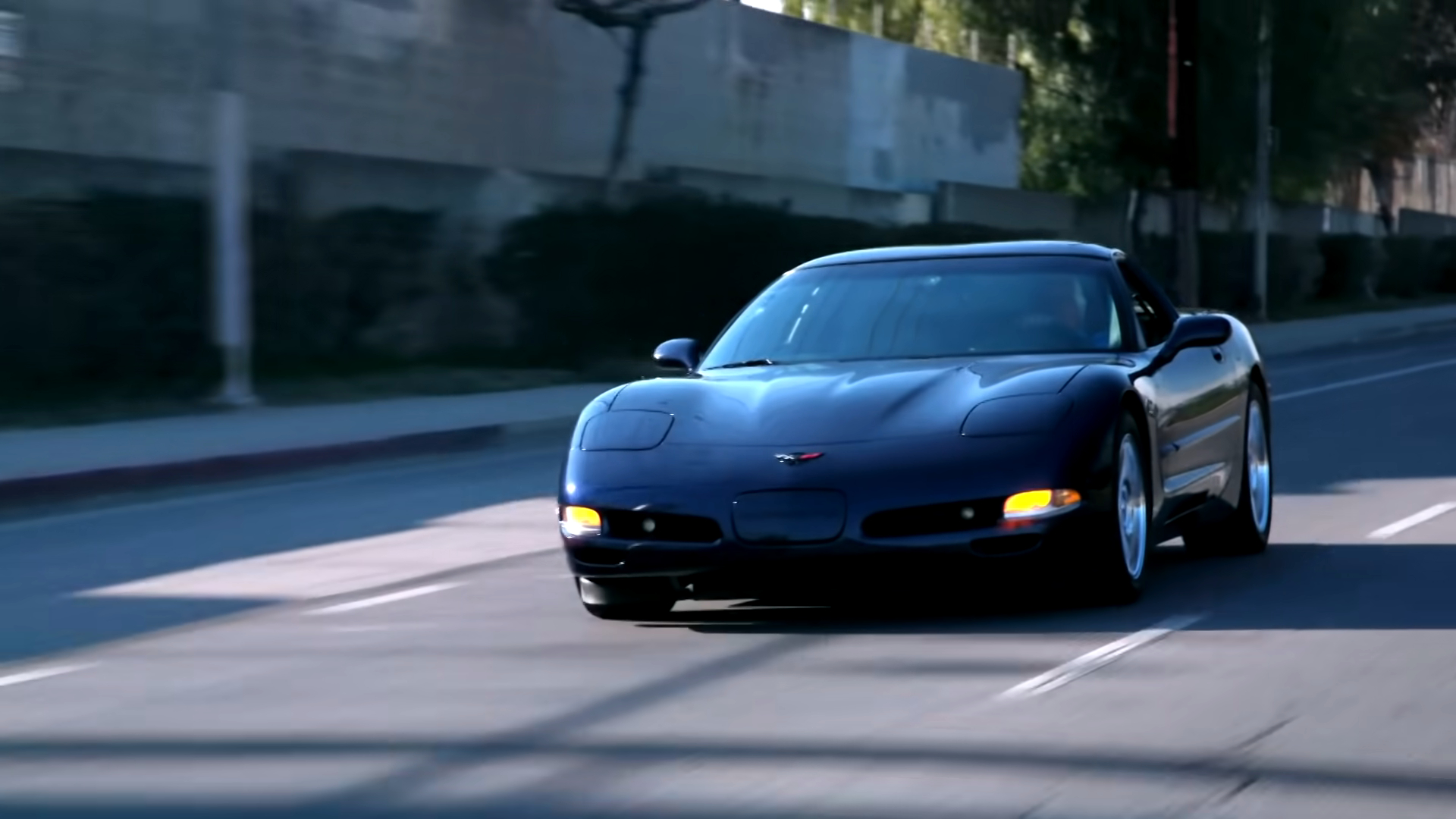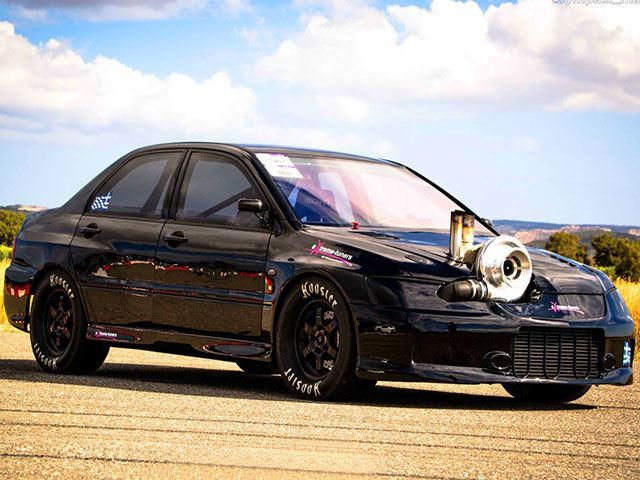Tuning culture began shortly after the invention of the car, and has been expanding ever since. The pursuit of additional performance and cosmetic enhancements has led car owners to modify their vehicles in increasingly creative ways; never more so than in the 90s, when the car modification scene exploded thanks to specialized magazines and a wide range of relatively affordable, modification-friendly models hitting the market. While the tuning scene is most commonly associated with Japanese brands, some American models have also built a reputation for being modified and enhanced over the years. Here are ten cars released in and around the 90s that have gained a reputation as tuning icons.
All table figures refer to the stock version of each model. These figures were sources from manufacturer websites.
1 Mk4 Toyota Supra
|
Engine |
3.0-liter inline-six |
|---|---|
|
Horsepower |
321 hp |
|
Torque |
315 lb/ft |
|
0-60 |
4.6 seconds |
The Toyota Supra is quite possibly the most famous tuner-friendly car in the world, and one that has crossed over from the world of automotive enthusiasts into being a household name, largely thanks to its appearance in the Fast and Furious movie franchise. The most well-known and popular Supra in the world of tuners is the Mk4 model (the iconic orange car from the movie series also belonged to this generation). The Supra’s engine, a member of the legendary 2JZ family, was equally famous.
Although a naturally aspirated version of the car did exist, the turbocharged version was the only one that made it to the US market, with a power output of 321 hp. The Supra’s engine was extremely sturdy and could withstand extensive modifications. Its power output could be brought up into four-figure territory, as is the case with this drag build.
2 Nissan Skyline GT-R R34
|
Engine |
2.6-liter twin-turbo inline-six |
|---|---|
|
Horsepower |
280 hp |
|
Torque |
293 lb/ft |
|
0-60 |
4.9 seconds |
Having first been introduced in January 1999, a few months after the equivalent generation of the Skyline it was based on, the R34 Skyline GT-R (short for “Gran Turismo-Racing”) arrived on the scene at the very tail end of the decade.
Although it quickly became a mainstay of automotive culture and the tuning scene worldwide, it was not available in the US, and did not become legal for import until very recently due to the infamous 25-year rule: while the “mainstream” Skyline could be imported to the States as of May 2023, the GT-R had to wait until January this year. A wide variety of upgrades is available, from performance exhaust systems to new turbos. The original power output was 280 hp. In some builds, the output has been successfully brought up to the 500-600 hp range.

Add CarBuzz to your Google News feed.
3 Mazda RX-7 FD
|
Engine |
1.3-liter twin-turbo twin-rotor rotary engine |
|---|---|
|
Horsepower |
252 hp |
|
Torque |
217 lb/ft |
|
0-60 |
4.9 seconds |
The third generation of the Mazda RX-7, commonly referred to as the FD after its model code, hit the North American market in 1993, and only lasted two years (while its Japanese counterpart remained on sale until 2002). Powered by one of Mazda’s legendary Wankel rotary engines, the RX-7 could be upgraded in countless ways; this four-rotor build by automotive YouTuber Rob Damm pushed power output into four-figure territory.
The RX-7 also made an appearance in the Fast and Furious series: although in the car used for the movie the engine was left untouched, a flamethrower exhaust was added, along with a number of cosmetic modifications. Mazda is now reportedly working on a successor for the RX-7, so rotary engine fans have something to keep their eyes peeled about in the future.
4 Honda Civic (6th Generation)
|
Engine |
1.6-liter four-cylinder |
|---|---|
|
Horsepower |
106-160 hp |
|
Torque |
103-111 lb/ft |
|
0-60 |
9.0 seconds |
The Honda Civic is another car whose tuning-related antics have crossed over into popular culture partially thanks to the Fast & Furious franchise (and the late Paul Walker’s memorable quote involving “three Honda Civics with Spoon engines”). This best-selling, versatile car has been on the market for decades, and as a relatively affordable model that offered a good platform for modifications, it quickly became an accessible entry point into the world of tuning.
The sixth generation of the model, arriving halfway through the 90s, became especially popular with tuners; available with a wide variety of trim levels and powertrains, its power output varied between 106 and 160 hp. The Civic was a blank canvas that offered plenty of room to be creative, with all sorts of modifications being carried out from minor parts upgrades to full engine swaps.
5 3rd Generation (“Fox-body”) Ford Mustang
|
Engine |
2.3-liter four-cylinder | 4.9-liter V8 |
|---|---|
|
Horsepower |
89 hp (I4) | 225 hp (V8) |
|
Torque |
120 lb/ft (I4) | 300 lb/ft (V8) |
|
0-60 |
7.0 seconds |
Commonly referred to as the “Fox-body” due to its use of the Fox platform, the third generation of the Ford Mustang quickly became a tuners’ favorite, and is one of two American cars to earn a spot on the list. The Fox-body Mustang had a very long lifespan, arriving on the market in 1979 and lasting until 1993; it received an update halfway through its life cycle in 1987.
The one change that became most relevant to the tuning community, however, didn’t arrive until 1989: the introduction of a new onboard computer system meant any changes made to the intake, engine, or exhaust system would now be recognized by the car’s ECU, which optimized the air/fuel ratio and power delivery. This resulted in much smoother, better performing results when making modifications to the car. One drag-oriented, LS-swapped Fox-body build achieved a power output of 1,300 hp, after a labor of love by owner Tyler Baber.
6 C5 Chevrolet Corvette
|
Engine |
5.7-liter V8 |
|---|---|
|
Horsepower |
345 hp (subsequently increased to 350) |
|
Torque |
356 lb/ft |
|
0-60 |
4.5 seconds |
The other American model to make the list is the fifth generation of the Corvette, known as the C5. Making its debut for the 1997 model year, the C5 was the last generation of the Corvette to sport pop-up headlights; while a fastback coupe and convertible were initially the only body styles available, a hardtop eventually joined the lineup in 1999. It was also the first model to be powered by the brand new LS1 engine, which initially produced 345 hp but was later upgraded to produce 350 hp in 2001. One popular modification for the C5 Corvette is the addition of a supercharger, which can push the power output north of 500hp.
7 Mitsubishi Lancer Evo
|
Engine |
2.0-liter turbocharged four-cylinder |
|---|---|
|
Horsepower |
244 hp (Evo I) |
|
Torque |
228 lb/ft (Evo I) |
|
0-60 |
5.1 seconds (Evo I) |
Mitsubishi’s most iconic model, and the one that pushed it into the spotlight of 90s car culture, is the Lancer Evo. A sports sedan based on the Lancer, it was first released in 1992, and production continued until 2016 when the brand decided to prioritize crossovers and SUVs, much to the disappointment of automotive enthusiasts. Evos have been modified extensively by tuners all over the world, with some examples coming out the other side with truly mind-boggling performance figures. This build by Extreme Tuners gained the title of “world’s fastest Evo” in 2017, with a power output of 1,700 hp and a quarter-mile time of just under eight seconds.
8 Honda S2000
|
Engine |
2.0-liter four-cylinder |
|---|---|
|
Horsepower |
247 hp |
|
Torque |
161 lb/ft |
|
0-60 |
5.8 seconds |
1999 wasn’t just a good year for tuners thanks to the arrival of the Skyline GT-R: the Honda S2000 also hit the market that year, and rapidly became another tuners’ favorite. One of its biggest claims to fame was its high power density, the highest of any mass production naturally aspirated car until 2010, when it was dethroned by the Ferrari 458 Italia.
Some of the most interesting S2000-based builds come from the workshop of one man in Japan, racing driver and shop owner Yusaku Shibata. One of these is the iconic Arvou S2000, which sets itself apart with its unique aero kit and supercharged engine producing 450 hp. Going a bit closer to home, an LS3-swapped build by US firm Street Car Market produces an output of 492 hp.
9 Nissan Silvia
|
Engine |
2.4-liter four-cylinder |
|---|---|
|
Horsepower |
140 hp (1989-1990 S13) | 155 hp (1990-1994 S13/S14) |
|
Torque |
152 lb/ft (1989-1990 S13) | 160 lb/ft (1990-1994 S13/S14) |
|
0-60 |
8.6 seconds (1989-1990 S13) | 7.9 seconds (1990-1994 S13) – 7.3 seconds (S14) |
The Silvia name technically never reached the United States; the S13 and S14 Silvias, the two generations of the model which made it to the US in the 1990s, were sold with the less memorable name 240SX. The S13 received a few updates in 1991, before being replaced by its successor three years later; this would be the last generation of the Silvia to be sold in the United States, as the S15 was only available in Japan, Australia and New Zealand.
The S14 Silvia in particular lent itself to a number of radical modifications, LS3 engine swaps being a common one. Some memorable builds include this Monaco-dwelling monster (courtesy of Italian firm Brill Steel Motorsports) or this 600-hp drift car.
10 Acura Integra Type R
|
Engine |
1.8-liter four-cylinder |
|---|---|
|
Horsepower |
195 hp |
|
Torque |
131 lb/ft |
|
0-60 |
6.6 seconds |
Somewhat of a rarity due to its low production volume (only 3,000 were ever built), the Acura Integra Type R nonetheless became a favorite among tuners when it landed on the US market in 1997. Its simple, clean design, good performance, and ability to tolerate modifications make it an ideal candidate for tuning. Granted, not all modifications were exactly tasteful or even performance-oriented: plenty of Integra Type Rs out there have been subjected to dubious aerodynamic and cosmetic upgrades, to the point that finding an unmodified one on the used market today is all but impossible (or extremely expensive).







